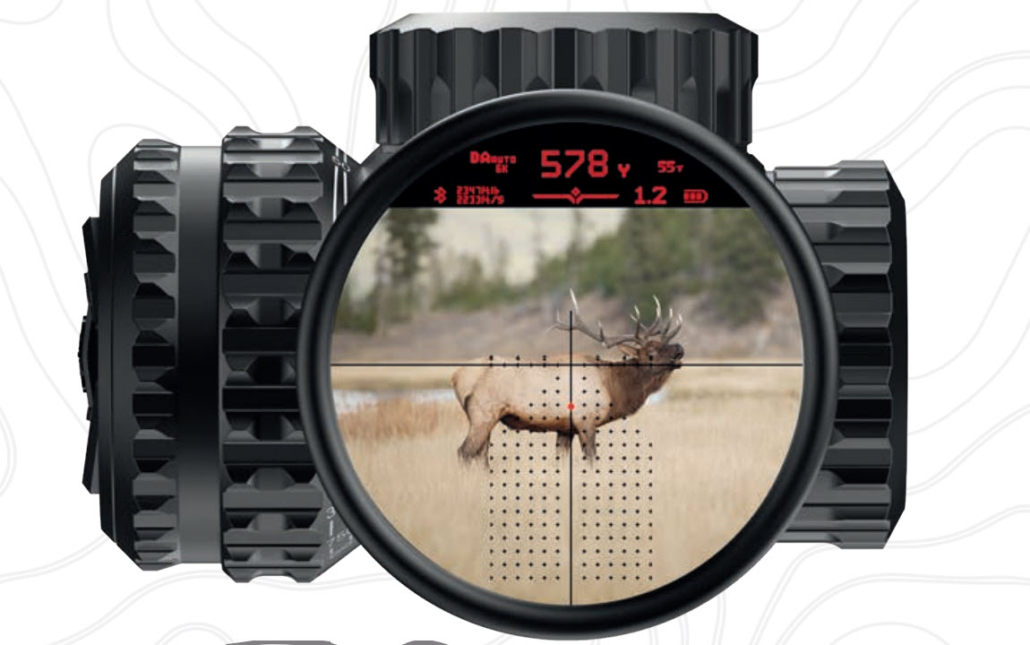Selecting the appropriate reticle for your rifle scope is essential for optimizing shooting performance, as it influences aiming precision, target acquisition speed, and adaptability to various shooting conditions. The ideal reticle depends on your specific shooting activities, such as hunting, target shooting, or tactical applications.
Understanding Scope Reticle Types
- Traditional Reticle: This classic design features a thin crosshair center with thicker outer sections. Examples would be the Duplex, Fine Duplex, and German #4. It’s widely favored for hunting due to its simplicity and effectiveness in various lighting conditions.
- Bullet Drop Compensating (BDC) Reticle: Designed with specific holdover points to account for bullet drop at various distances. The BDC reticles enable shooters to quickly adjust their aim for different ranges without manual calculations. They are especially useful for hunters and shooters engaging targets at varying distances.
- Ranging Reticle: Equipped with dots or hash marks along the crosshairs in range estimation and bullet drop compensation. Examples would be the mil-dot and tree/ladder style reticles. It’s particularly beneficial for long-range shooting and tactical scenarios, allowing shooters to make adjustments without manual turret changes.
First Focal Plane (FFP) vs. Second Focal Plane (SFP) Reticles
- First Focal Plane (FFP): In FFP scopes, the reticle increases in size as the magnification increases, maintaining consistent subtensions throughout the power range. This consistency is advantageous for long-range shooters who rely on accurate holdovers and ranging at any magnification. However, at lower magnifications, the reticle may appear smaller and harder to see.
- Second Focal Plane (SFP): SFP reticles remain the same size regardless of magnification. While this means the subtensions are only accurate at a specific magnification (usually the highest), the reticle remains easily visible at all magnification levels. This characteristic makes SFP scopes popular among hunters and those who frequently shoot at lower magnifications.
Matching Reticles to Shooting Activities
- Hunting: For hunters, simplicity and quick target acquisition are paramount. A traditional reticle in an SFP hunting scope is often preferred, as it offers a clear aiming point without clutter. BDC reticles can also be beneficial for accommodating varying shot distances.
- Target Shooting: Precision is critical in target shooting. FFP scopes with fine crosshair or dot reticles allow for accurate adjustments and pin-point accuracy, essential for consistent performance in competitions.
- Tactical Applications: Tactical shooters often encounter dynamic scenarios requiring rapid adjustments. FFP reticles with a detailed tree/ladder reticle enables for a quick compensation for bullet drop and windage, facilitating engagement with targets at varying distances without manual turret adjustments.
Illuminated vs. Non-Illuminated Scope Reticles
- Illuminated Reticles: These reticles enhance visibility in low-light conditions, aiding in quick target acquisition during dawn, dusk, or in dense cover. They are beneficial for hunters and tactical shooters operating in varying light environments. All illuminated reticles have a separate dial to allow for brightness adjustments.
- Non-Illuminated Reticles: Traditional non-illuminated reticles rely solely on ambient light. While they may be less effective in low-light scenarios, they are typically more straightforward. No need for batteries or the need to turn another dial.
Considerations for Reticle Selection
- Simplicity vs. Complexity: A simpler reticle offers an uncluttered view, allowing for a quick target acquisition. A more complex reticle provides detailed information for range estimation and bullet drop compensation. Choose based on your comfort level and shooting requirements.
- Magnification Range: Ensure the reticle type complements your scope’s magnification range. For example, FFP reticles are advantageous in high-magnification scopes used for long-range shooting.
- Personal Preference: Ultimately, the best scope reticle is one that aligns with your shooting style, preferences, and the specific demands of your shooting activities. Hands-on experience with different reticle types can provide valuable insights into what works best for you.
Picking the best reticle comes down to understanding your primary shooting application and how different features support that goal. Whether you’re a hunter looking for simplicity or a long-range shooter requiring precision holdovers there’s a reticle designed for you.
Duplex reticles offer simplicity and reliability for hunters, while BDC and ranging reticles provide the advanced functionality needed for precision work. First focal plane reticles shine in dynamic, long-range environments, whereas second focal plane reticles are ideal for consistent, mid-range shots with maximum visibility.
As with any gear choice, personal preference and experience play a major role. If possible, try a few reticle types before committing—and always consider how your scope’s magnification, focal plane, and illumination features interact with your reticle. When these elements work in harmony, your shooting will be faster, more accurate, and more enjoyable.
Happy shooting—and may your crosshairs always land true.
